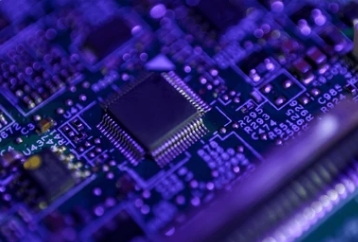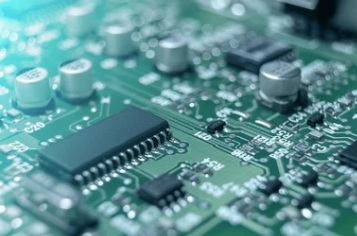Content Menu
● Understanding SMT
>> Historical Context
● Advantages of SMT
● The SMT Production Process
>> Design and Layout
>> Solder Paste Application
>> Component Placement
>> Reflow Soldering
>> Inspection and Testing
● Applications of SMT
● Future Trends in SMT
>> Miniaturization
>> Advanced Materials
>> Smart Manufacturing
● Challenges Facing SMT
● Conclusion
● FAQ
>> 1. What is Surface Mount Technology (SMT)?
>> 2. What are the main advantages of using SMT?
>> 3. How does the SMT production process work?
>> 4. In which industries is SMT commonly used?
>> 5. What challenges does SMT face today?
Surface Mount Technology (SMT) has revolutionized the electronics assembly industry, becoming a cornerstone of modern manufacturing processes. This technology allows for the efficient placement of electronic components directly onto the surface of printed circuit boards (PCBs), significantly enhancing production speed, reducing costs, and improving overall product quality. In this article, we will explore the various aspects of SMT, its advantages, applications, and its critical role in the evolution of electronics assembly.

Understanding SMT
SMT is a method used to mount electronic components onto the surface of PCBs. Unlike traditional through-hole technology, where components are inserted into holes drilled into the PCB, SMT components are placed directly on the board's surface. This method allows for a more compact design and enables higher component density.
Historical Context
The development of SMT dates back to the 1960s, but it gained significant traction in the 1980s as electronic devices became smaller and more complex. The need for miniaturization and increased functionality drove manufacturers to adopt SMT as a standard practice in electronics assembly.
Advantages of SMT
The adoption of SMT in modern electronics assembly offers numerous benefits:
- Higher Component Density: SMT allows for smaller components to be placed closer together on a PCB, leading to more compact designs.
- Reduced Manufacturing Costs: With fewer materials required for PCB fabrication and assembly, manufacturers can reduce costs significantly.
- Improved Performance: SMT components typically have shorter leads, which minimizes inductance and resistance, resulting in better electrical performance.
- Automation Compatibility: SMT processes are highly compatible with automated assembly systems, enabling faster production rates and reducing labor costs.
- Enhanced Reliability: The soldering techniques used in SMT provide stronger mechanical connections, leading to improved reliability and durability of electronic devices.
The SMT Production Process
The SMT production process involves several key steps:
Design and Layout
The first step in SMT production is designing the PCB layout. Engineers use specialized software to create a design that optimizes component placement while considering factors like signal integrity and thermal management.
Solder Paste Application
Solder paste is applied to the PCB using stencil printing or jet printing methods. This paste consists of tiny solder balls mixed with flux, which helps solder adhere to the components during reflow.
Component Placement
Automated pick-and-place machines accurately position the components onto the solder paste-covered pads on the PCB. This step is crucial for ensuring that all components are correctly aligned for soldering.
Reflow Soldering
Once all components are placed, the PCB undergoes reflow soldering. The assembly is passed through a reflow oven where heat melts the solder paste, creating permanent electrical connections between the components and the PCB.
Inspection and Testing
After reflow soldering, assemblies are inspected using automated optical inspection (AOI) systems or X-ray inspection to identify defects such as misaligned components or insufficient solder joints. Functional testing follows to ensure that the assembled board operates correctly.

Applications of SMT
SMT is widely used across various industries due to its versatility:
- Consumer Electronics: Devices like smartphones, tablets, and laptops heavily rely on SMT for their compact designs and high performance.
- Automotive Electronics: Modern vehicles incorporate numerous electronic systems for safety, navigation, and entertainment, all benefiting from SMT's reliability.
- Medical Devices: In medical technology, precision and reliability are paramount; SMT plays a crucial role in ensuring that devices function correctly under critical conditions.
- Industrial Equipment: Automation and control systems in industrial settings utilize SMT for efficient operation and maintenance.
Future Trends in SMT
As technology continues to evolve, so does SMT. Some emerging trends include:
Miniaturization
With ongoing demands for smaller devices with enhanced capabilities, manufacturers are developing even smaller components suitable for SMT applications.
Advanced Materials
Research into new materials for soldering processes aims to improve thermal performance and reduce environmental impact.
Smart Manufacturing
The integration of Industry 4.0 concepts into SMT production processes will enhance automation through data analytics and machine learning, allowing for real-time monitoring and optimization.
Challenges Facing SMT
Despite its many advantages, SMT also faces challenges:
- Component Complexity: As components become more complex with integrated functionalities, ensuring precise placement becomes increasingly difficult.
- Thermal Management: High-density assemblies may lead to heat dissipation issues that require innovative cooling solutions.
- Supply Chain Issues: Global supply chain disruptions can affect component availability and lead times for production.
Conclusion
In conclusion, Surface Mount Technology plays an essential role in modern electronics assembly by enhancing efficiency, reducing costs, and enabling advanced designs. Its widespread application across various industries underscores its importance in today's technological landscape. As manufacturers continue to innovate within this space, we can expect further advancements that will shape the future of electronics assembly.

FAQ
1. What is Surface Mount Technology (SMT)?
Surface Mount Technology (SMT) is a method used to mount electronic components directly onto the surface of printed circuit boards (PCBs), allowing for higher component density and improved performance compared to traditional through-hole technology.
2. What are the main advantages of using SMT?
The main advantages of using SMT include higher component density, reduced manufacturing costs, improved electrical performance due to shorter leads, automation compatibility for faster production rates, and enhanced reliability through stronger mechanical connections.
3. How does the SMT production process work?
The SMT production process involves several steps: designing the PCB layout, applying solder paste, placing components using automated machines, reflow soldering to create connections, followed by inspection and testing to ensure functionality.
4. In which industries is SMT commonly used?
SMT is commonly used in consumer electronics (like smartphones), automotive electronics (for safety systems), medical devices (requiring precision), and industrial equipment (for automation).
5. What challenges does SMT face today?
Challenges facing SMT include increasing component complexity making precise placement difficult, thermal management issues due to high-density assemblies, and potential supply chain disruptions affecting component availability.




















